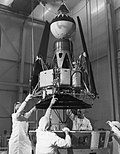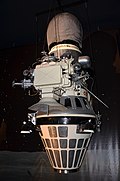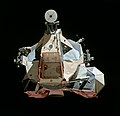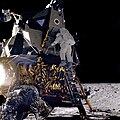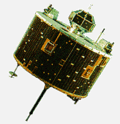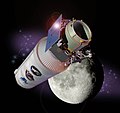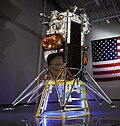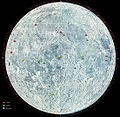This is a partial list of artificial materials left on the Moon, many during the missions of the Apollo program. The table below does not include lesser Apollo mission artificial objects, such as a hammer and other tools, retroreflectors, Apollo Lunar Surface Experiments Packages, or the commemorative, artistic, and personal objects left by the twelve Apollo astronauts, such as the United States flags, the commemorative plaques attached to the ladders of the six Apollo Lunar Modules, the silver astronaut pin left by Alan Bean in honor of Clifton C. Williams whom he replaced, the Bible left by David Scott, the Fallen Astronaut statuette and memorial plaque placed by the crew of Apollo 15, the Apollo 11 goodwill messages disc, or the golf balls [1] Alan Shepard hit during an Apollo 14 moonwalk.
Contents
Five S-IVB third stages of Saturn V rockets from the Apollo program crashed into the Moon, and are the heaviest human-made objects on the lunar surface. Humans have left over 187,400 kilograms (413,100 lb) of material on the Moon. Besides the 2019 Chang'e 4 and SLIM missions, the only artificial objects on the Moon that are still in use are the retroreflectors for the Lunar Laser Ranging experiments left there by the Apollo 11, 14, and 15 astronauts, Chandrayaan-3 lunar lander, and by the Soviet Union's Lunokhod 1 and Lunokhod 2 missions. [2]
Objects at greater than 90 degrees east or west are on the far side of the Moon, including Ranger 4, Lunar Orbiter 1, Lunar Orbiter 2, Lunar Orbiter 3, Chang'e 4 lander and Yutu-2 rover.
Because of increasing numbers of missions to and objects at the Moon, a global registry of lunar activities has been proposed in 2023 by the Open Lunar Foundation. [3]



